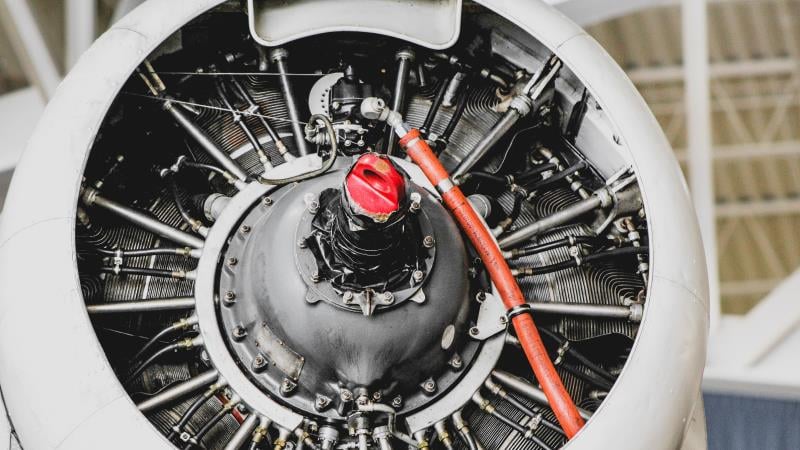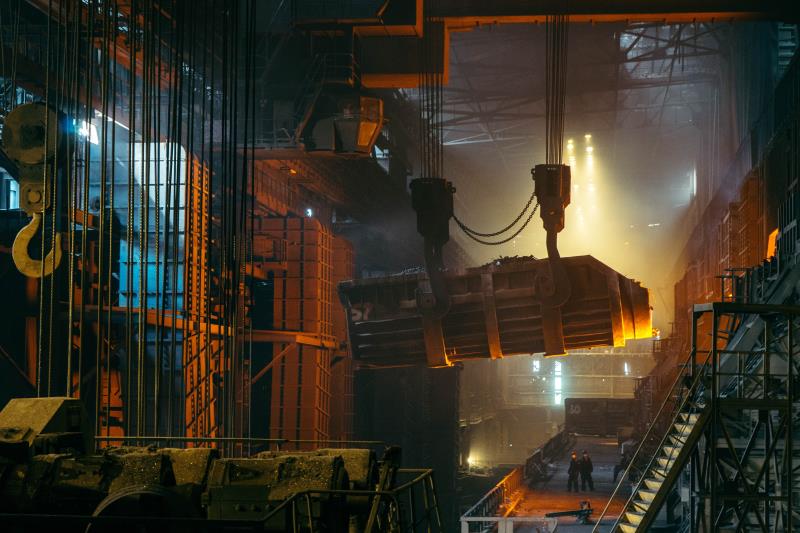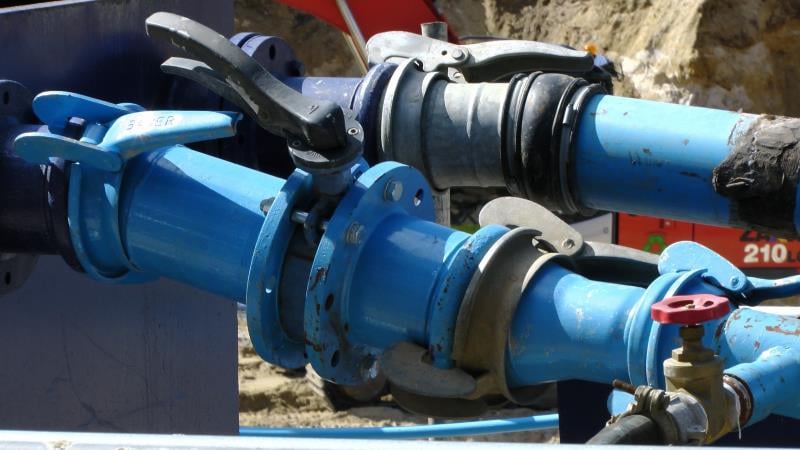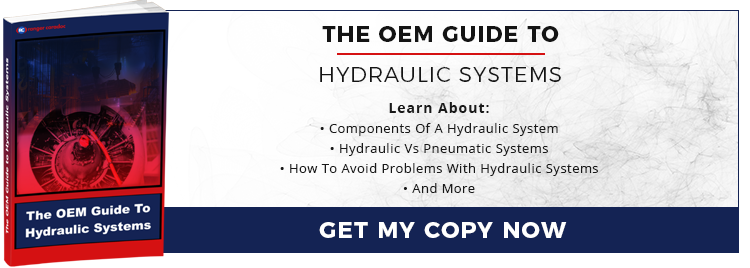The OEM Guide To Hydraulic Systems

|
|
|
Introduction
High performance fluid powered machinery relies on quality hydraulic systems you can be confident in. Whether you require individual components, industry standard fittings, or a custom engineered solution, procuring all your requirements from a single, reliable manufacturing source will help you streamline your operations and conserve resources.
The hydraulics manufacturer you choose must have the expertise, infrastructure and capacity to fulfil your OEM requirements; while guaranteeing the longevity, efficiency and safe operation of your fluid conveyance systems.
Ranger Caradoc Hydraulics have over 40 years’ experience in the design, manufacture and supply of hydraulic power packages and complete hydraulic systems for original equipment manufacturers. We provide a high quality, reliable, and efficient global service to OEM manufacturers from a variety of industrial sectors, specialising in the supply of custom components and bespoke hydraulic systems, to any specification.
As an authority in the field of hydraulic technology, we’ve created this page to explain the factors to consider when selecting components and systems, to help you choose high functioning, low maintenance and cost-effective solutions.
Within this page we’ll explain the variations within the mechanics of hydraulic systems, the different advantages of hydraulic and pneumatic fluid power, and how to choose the right systems for your specific application. We’ll also cover the common problems associated with hydraulic systems and how many of these can be avoided through quality engineering, and sourcing the correct fittings and accessories.
Hydraulic Systems
Hydraulic circuits work by applying controlled pressure to liquids within a confined space to multiply force and create motion, using the principle of Pascal’s law. Hydraulic systems are used to generate precise, linear or rotational force, making them ideal for incorporation into industrial machinery.
Components Of A Hydraulic System
A hydraulic system comprises of six primary parts, with additional components, such as filtration and heat exchangers, added to enhance performance and safety; depending on the required application and function of the system.
- Reservoir – A reservoir or tank contains the hydraulic fluid. This is usually a virtually incompressible oil.
- Pump – A pump creates suction to draw the fluid from the reservoir and to push the fluid through the system, transmitting power from mechanical energy into kinetic energy.
- Motor – A source of electrical power to operate the pump.
- Actuator – An actuator can be either a cylinder that converts hydraulic power into mechanical linear motion, or a motor to produce rotational motion.
- Valves – Valves are used to control the direction, flow rate and pressure of the liquid within the system.
- Pipes – To channel the liquid between the system components.
Parts can be sourced as individual components, or as integrated hydraulic power packages; also referred to as hydraulic power units. Power packages consist of all the parts required for operation, including any additional pumps, valves and filters.
At Ranger Caradoc Hydraulics, we design and manufacture all the above components to standard and bespoke specifications. The key advantage of power units is that all the components are engineered for specific flow, pressure and loads, making it easier to source a unified package to meet your demand. Our standard stock range of hydraulic power packs includes single and 3 phase AC motors, as well as 12 and 24 volt DC motors.
Should you require a unique solution, Ranger Caradoc can custom design, perfect, manufacture and fit a bespoke hydraulics system for any prototype equipment.
How Hydraulic Components Work Together
In a basic hydraulic system hydraulic fluid is pumped from the reservoir into pipes, passing through control valves into an actuator. The pressure of the fluid against a piston exerts a load force to create linear or rotational motion against a load. The liquid on the other side of the piston is pressurised, forcing it onwards through the piping and back to the reservoir or pump. This creates a sealed, self lubricating circuit, with no loss of fluid. By connecting multiple circuits, using the load force of each to power the next, forces can be multiplied to push or lift heavy loads.
To maintain correct and safe pressures throughout the circuit every component must be in good working order. Low pressure results in poor performance; while a build up of pressure can lead to leaks, or overheating of the system.
The size, design, complexity and compatibility of each primary part must match the nature of the application and the level of power required to perform the task efficiently. It is equally important to ensure every component is of the highest quality.
As many individual components of hydraulics systems are based on different mechanical principles to achieve variations in output, an understanding of the choice of standard designs available for each type of mechanical component will help you determine whether stock or custom components are best suited to your OEM requirements.
Hydraulic Pumps
Hydraulic pumps act like the heart of a hydraulic system, generating flow of the fluid at a specific regulated rate. There are two main types of pump:
1) Fixed Displacement Pumps
A fixed amount of fluid is moved with each stroke of the motor. Fixed displacement pumps are suited to single repetitive functions. They can produce high flow rates at relatively low pressures and are easy to maintain.
2) Variable Displacement Pumps
Variable flow and pressure enable use within a wider variety of tasks; the designs are more complex and more expensive to produce and maintain.
Fixed and variable displacement pump designs include:
- Gear pump – A simple design using rotating sequential or interlocking gears to push the fluid.
- Radial piston pump – Pistons are arranged in a radial position around a drive shaft. Radial pumps are suited to high power applications.
- Axial piston pump – Pistons are arranged within a cylinder block and driven by an angled swashplate powered by the input shaft.
- Vane pump – Sliding rectangular vanes are slotted into a circular rotor supported in a cycloidal cam. Suction is created as the vanes are compressed against the walls of the housing during rotation.
Choosing the correct type of pump is crucial for ensuring optimum performance from your hydraulic equipment and reducing maintenance costs. A hydraulics specialist, like Ranger Caradoc, can offer professional advice, or a technical engineer can source a compatible design; accounting for the following considerations:
- The output pressure required to operate the equipment.
- Whether the application will perform a single consistent motion or multiple tasks.
- The size of pump required to fit the equipment.
- The hose inlet and outlet size required to match the power output of the pump.
Powering The Pump
Sourcing the correct sized electric motor to power the pump minimises operation costs. Motor size is determined by the horsepower required to drive the pump, using the following calculation as a general guideline:
KW = (Litres/min x Pressure in bar)/510
There are many online conversion tools available to assist with these calculations, or one of our experienced team members will be happy to offer their expertise. The extensive range of high specification pumps from Ranger Caradoc are designed to accommodate working pressures up to 250 bar and flow rates of up to 250 litres per minute.
Actuators
An actuator uses hydraulic power to create linear, rotary or oscillatory motion. There are two types of hydraulic actuators; cylinders, used to create linear force and motors, which provide rotary force.

Hydraulic Cylinders
While cylinder design varies, depending on the specific industrial application of the hydraulics system, all cylinders consist of a cylindrical barrel containing a piston, connected with a piston rod. The piston divides the cylinder into two chambers; the cap end and the head end. The piston and its moving parts are secured through a series of mountings, hydraulic seals and sliding rings. The fluid pressure acts upon the surface area of the piston to create directional force.
In a single acting cylinder, the piston can only move in one direction, whereas in a double acting cylinder pressure can be applied to each side of the piston creating movement from side to side.
Every component of the cylinder must be precision engineered to ensure the system remains airtight, leak free, and maintains the correct pressure for efficient and safe operation. Choosing the correct cylinder size is based on how much force is required. Force is calculated using the following formula:
Force (F) = Fluid Pressure (P) x Piston Surface Area (A)
At Ranger Caradoc Hydraulics, we manufacture an unrivalled range of hydraulic cylinders for all industrial sectors. We maintain high stock holdings of all standard cylinders, including:
- Single and double acting cylinders
- 2 and 3 stage telescopic cylinders with pin mounting
- Displacement and 4 stage cylinders
- We also manufacture a wide choice of cylinder variants with foot, flange, trunnion, clevis or swivel bearing mountings
Our cylinders are available with minimal lead-time and should you require a custom built cylinder, we have the capacity to manufacture up to 200mm bore and 2500mm stroke cylinders at our in-house facility.
Hydraulic Motors
In a hydraulic motor the fluid pressure turns a shaft to generate torque, prior to exiting through a port on the opposite side of the motor. The three most common designs include:
- Gear motors - Suited to medium pressures and flows. The fluid flows between the gears to the outlet port; with the pressure differential preventing leakage.
- Vane motors - For medium pressure and high flows.
- Radial and axial piston motors – For high flow and high pressure applications.
In addition, Gerotor and Gerolor motors are used in mobile and agricultural applications to generate high power, low speed torque.
To ensure high performance from all types of hydraulic motor, it is important to consider the following factors:
- The maximum operating pressure
- The speed and torque required to operate the equipment
- The displacement and flow rates
- The type and density of the fluid required
- The maintainability of the components and parts availability
Ranger Caradoc Hydraulics specialise in high torque, low speed motors. Our hydraulic motors are specifically designed to provide maximum torque on start-up as well as maintain shaft speed during even the most arduous operations. Our range includes a versatile, interchangeable choice of compatible motors covering; DANFOSS, CHARLYN, WHITE, ADAN, SAM, CROSS and TRW.
Hydraulic Valves
Hydraulic systems depend on valves to control the directional flow of fluid through the system; therefore, operation relies on sourcing the correct size and type of valve. Valves are available in an array of different sizes, materials and mounting styles, to conform to varying international standards.
There are three main types of hydraulic valve, each controlling a specific function:
- Directional control valves - Check valves block the flow of hydraulic oil, while spool valves change the flow direction.
- Flow control valves - These valves determine the speed of the fluid flow by increasing or contracting the opening at the valve point.
- Pressure control valves - Pressure, or throttle valves expand or contract in response to the viscosity of the hydraulic fluid.
In addition to the three main types of valve, specialised valves include:
- Multi-block directional valves – To provide centralised system control using a combination of directional and pressure valves.
- Electrohydraulic servo valves – Using an electrical signal to control the flow and pressure of hydraulic fluid to the actuator.
- Solenoid valves – Using magnetic fields to create mechanical push / pull functions controlling flow, pressure or control direction.
At Ranger Caradoc, we are proud to stock the largest range of superior quality valves from a single source. Our range includes:
- CETOP 3 (NG6) and CETOP 5 (NG10) solenoid operated valves, sub-plates, manifolds and modules.
- Monoblock and bankable hand operated valves with accessories for finger-tip control of mobile and industrial equipment.
- Relief, sequencer, check, pressure reducing, priority, flow and speed control, shuttle, crossline ball and diverter control valves.
Hydraulic Vs Pneumatic Systems
Both hydraulic and pneumatic systems are referred to as fluid powered technologies, however pneumatics work by compressing gas to create load force. Unlike fluids, which compress minimally under high pressure, gasses are highly compressible; enabling air to flow rapidly with little resistance for fast, low pressure operation in a pneumatic system.
Pneumatics are well suited to high speed, repetitive manufacturing and assembly applications. Pneumatic systems are also cleaner; transferring cycled air back to the atmosphere, with no environmental impact from leaks. This makes pneumatics suited to food and pharmaceutical industry applications where there can be no risk of contamination.
Pneumatic systems are cost effective to design and manufacture as they can be constructed from inexpensive, lightweight materials, using mass production methods, like plastic injection moulding and die cast aluminium.
However, initial manufacturing cost savings can soon be outweighed by high operation costs. Pneumatic systems cost approximately five times more to run, due to the high energy consumption of the air motors and the amount of heat energy lost during air compression.
Hydraulic Power Systems
When it comes to heavy duty performance, hydraulic systems have the following key advantages over pneumatic systems:
- Hydraulic systems typically operate at around 1,500 to 2,000 PSI, for high force mechanical application. Pneumatic systems operate between 73 and 145 PSI.
- Linking multiple hydraulic applications enables multiplication of force.
- Pneumatic systems are less suited to precision tasks as air driven actuators cannot maintain constant, consistent force like hydraulics.
- Hydraulic systems are easy to start, stop, speed up or slow down for enhanced control.
Hydraulic systems tend to be more complex in design and therefore require a higher skill set to maintain. However, working with a specialist OEM hydraulics manufacturer will equip you with the knowledge, quality design and customer support to minimise any problems.
How To Avoid Problems With Hydraulic Systems
The unique advantages of hydraulic systems also comes with specific problems; ranging from loss of power and messy leaks of hydraulic oil, through to serious and potentially hazardous problems, including pressure overload, heat overload and burst hydraulic lines. Virtually all problems can be prevented through quality design, correct specification of parts by manufacturers, prototype development and diligence.
Why Problems Occur
While liquids are extremely difficult to compress, they are not incompressible. Hydraulic oil compresses 0.5% for every 1000 PSI exerted. Compressibility increases with pressure and temperature. Using the principle of Pascal’s law, this pressure is transmitted equally throughout the fluid and against the container walls. When oil is pushed into a fixed volume area, the pressure rises quickly. If the pressure cannot be transmitted to the load effectively, such as in the case of a cylinder leak, or an incorrectly adjusted valve, the energy converts to heat. Excessive heat poses a high hazard risk.
These problems can be reduced in the first instance by using the correct viscosity of hydraulic fluid for your application along with using correctly sized components to handle the flow of the system. OEMs should also advocate a proactive maintenance approach of early detection and repair.
Signs That Indicate Problems
The three main signs of a problem within a hydraulic system are high fluid temperature, reduced or slow performance and increased noise during operation.
High Fluid Temperature
Fluid temperatures above 180°F (82°C) damage seals and harden O rings within a hydraulic system, increasing the risk of leaks. Heat also degrades the hydraulic oil, reducing performance and the life expectancy of your equipment.
Slow Operation
Reduced performance is usually the first indication of a loss of flow within a system. The source of external leakage is easy to identify. Internal leaks are usually located in areas of higher temperature, as heat is generated wherever oil flows from high to low pressure. An infrared thermometer can help detect problems.
Increased Noise
An ingress of air sucked into the system creates vapour cavitation in the hydraulic fluid. As the air within the fluid compresses and decompresses it creates noise during implosion, and causes fluid temperatures to rise. This damages seals and further degrades the fluid. Failure to rectify cavitation can lead to component and system failure.
Best Practice
Adopting the following practices will help to maximise performance and the longevity of your hydraulic system:
- Use the recommended viscosity of hydraulic oil for the system
- Maintain correct reservoir fluid levels to dissipate heat and prevent air from being sucked into the system through the pump’s inlet
- Incorporate a suitable heat exchanger to maintain optimum temperatures, within specific working conditions
- Eliminate causes of aeration and vapour cavities through quality design and manufacture Increase oil performance by incorporating and maintaining suitable pressure and return line filters, or adding suction and offline filtration
- Install a fluid temperature alarm
- Perform regular inspections of pump intake lines, pump shaft seals, clamps and fittings
Hydraulic Systems From Ranger Caradoc
Ranger Caradoc Hydraulics are fully equipped to provide OEMs with efficient, cost effective and reliable hydraulic systems. Our extensive development and manufacturing facility enables us to fulfil orders on time, whatever the volume, within 14 days of order.
To help OEMs meet consumer demand for innovation and reduce maintenance costs we provide one of the largest single sources for hydraulic components, alongside a fully project managed, bespoke service.
At Ranger Caradoc, our engineers are specialists in both hydraulic technology and mechanics; enabling us to communicate at all levels of technical expertise. Our engineers provide a personal on-site consultation service, taking the time to understand your business and engineering requirements before specifying solutions to meet your needs and infrastructure.

Why Choose Ranger Caradoc?
Our integrated approach to hydraulics provides OEM manufacturers with a professional, cost effective and comprehensive service:
- Our service extends to all hydraulic components and control systems, including cylinders, pumps, valves, power packs, couplings, hoses and fittings
- We offer impartial product advice on hydraulic components and control systems
- 24/7 technical support from a certified hydraulic specialist - we have been engineering and specifying hydraulic systems since 1977
- Free design and prototype development service
- Free hydraulic system installation on prototype machinery
- High quality precision engineering
- High availability of standard models and sizes
- In-house manufacturing infrastructure
- An efficient reliable, single source supply chain, with a proven track record for global supply and delivery


